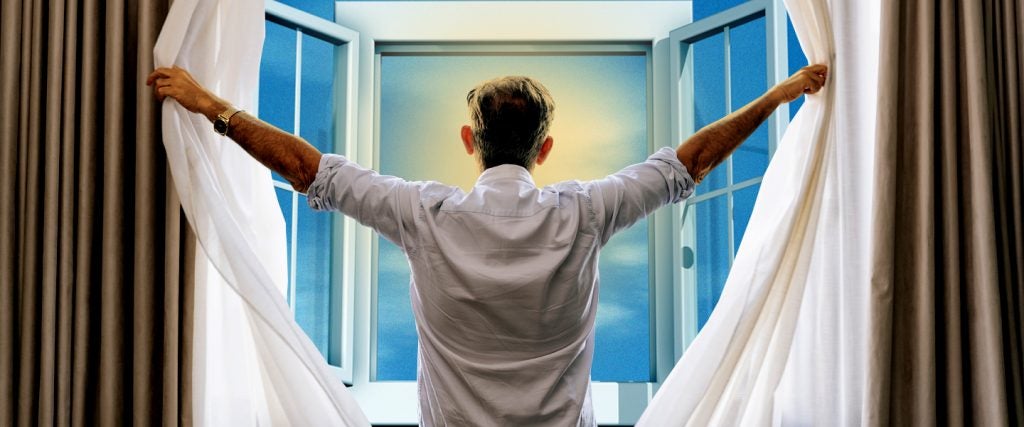I want you to consider a grow house filled with pot plants, and think of the growers controlling all of those plants’ environment with artificial light designed to imitate the sun. If a grower leaves their plants under the lights for 18 hours a day, it will trigger the plants into acting as if it’s springtime, and thus, they will start stretching up toward that artificial sun. But if you cut down the amount of light to, say, 12 hours a day, those same pot plants will be triggered into thinking it’s time to flower. The amount of light received totally affects their life cycles.
Now, you ready for the shocker? It seems the same can be said for human beings.
The amount of light your eyes detect sets your circadian rhythms, affects your sleep cycle and helps determine your mental health and sense of resilience. The amount of light your eyes receive may even affect your susceptibility to cancer — i.e., a growing body of evidence shows that artificial-light-at-night (aka the glow from your smartphone and/or laptop) “may be associated with an increased risk of breast cancer, prostate and colorectal cancer.” Less life-threatening, but still worrisome, artificial-light-at-night might “also cause obesity, diabetes and depression.”
The good news is, newly released research led by Kenneth Wright from the University of Colorado Boulder and Timothy Brown of the University of Manchester has helped to provide a much better understanding of how much — and what kind of — light we need to thrive like the most bountiful of pot plants. As Brown explained in a press release, “This now provides a clear framework to inform how we light any interior space ranging from workplaces, educational establishments and health-care facilities to our own homes. These recommendations provide the first scientific consensus, quantitative, guidance for appropriate daily patterns of light exposure to support healthy body rhythms, nighttime sleep and daytime alertness.”
Wright and Brown’s team analyzed our modern lighting options — in particular, compact fluorescent lights (CFL) and light-emitting diodes (LED) lights — and determined that they’re insufficient in the daytime and too bright in the nighttime. As the study found on the latter count: “In comparison with backlit liquid crystal display (LCD), evening exposure to a light emitting diode (LED)-backlit computer screen (blue-enriched light) resulted in attenuated salivary melatonin and sleepiness levels, with a concomitant increase in cognitive performance associated with sustained attention and with working and declarative memory.”
In layperson’s terms — or at least closer to layperson’s terms — this means our screens disrupt our photoreceptors and the protein, melanopsin, which, in turn, makes it harder to fall asleep, which, in turn, can eventually trigger unhealthy outcomes like depression. The implication here is pretty obvious: No reading your phone in bed, or the blue light will tell your body it’s time to be alert, and your system will respond accordingly.
Meanwhile, during the daytime, the recently developed, more environmentally friendly compact fluorescent lightbulbs are color-timed in a way that also affects our circadian rhythms. CFL bulbs “at a correlated color temperature of 6,500 K [blue-enriched light] induced greater melatonin suppression, together with enhanced subjective alertness, well-being and visual comfort.”
The translation here: CFL bulbs make a person less-sleepy, more alert and generally feel better. However, if we increased the amount of blue light that those bulbs emitted, they could be even more effective. To that end, more daytime blue light will leave you less susceptible to the negative effects of such light at night. (For all of this, Wright et al provide exact numbers — in “lux” and melanopic EDI — but think of that more like shorthand for manufacturers who are tasked with crafting such lighting devices.)
Overall, a 9-to-5 dosage of the right kind of blue light appears to lead to a wide range of life improvements, “including reduced depression, agitation and anxiety,” as well as better “alertness [and] performance.”
Let there be light, indeed.

